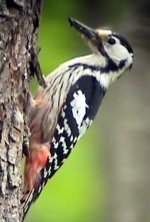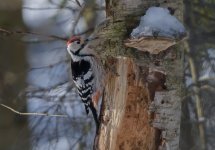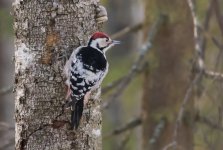Deb Burhinus
Used to be well known! 😎

Happy to be proved wrong but imo the face pattern is fine. The bill looks long because the nasal feathers are worn - males have noticeably longer and heavier bills than females:
https://macaulaylibrary.org/asset/212946631
and here
https://macaulaylibrary.org/asset/204844491
I don’t see the malar stripe reaching the bill base (slightly dark/ghosting of a stripe can be seen in MSW too:
https://macaulaylibrary.org/asset/187593681
but never as pronounced as Syrian
https://www.waldwissen.net/en/did-you-already-know/syrian-woodpecker-in-germany
- the 3 large white rounded spots visible (tips to the greater coverts) point to MSW Syrians have less white on the wing
https://www.flickr.com/photos/126501038@N08/49407552511
https://macaulaylibrary.org/asset/212946631
and here
https://macaulaylibrary.org/asset/204844491
I don’t see the malar stripe reaching the bill base (slightly dark/ghosting of a stripe can be seen in MSW too:
https://macaulaylibrary.org/asset/187593681
but never as pronounced as Syrian
https://www.waldwissen.net/en/did-you-already-know/syrian-woodpecker-in-germany
- the 3 large white rounded spots visible (tips to the greater coverts) point to MSW Syrians have less white on the wing
https://www.flickr.com/photos/126501038@N08/49407552511
Last edited:









